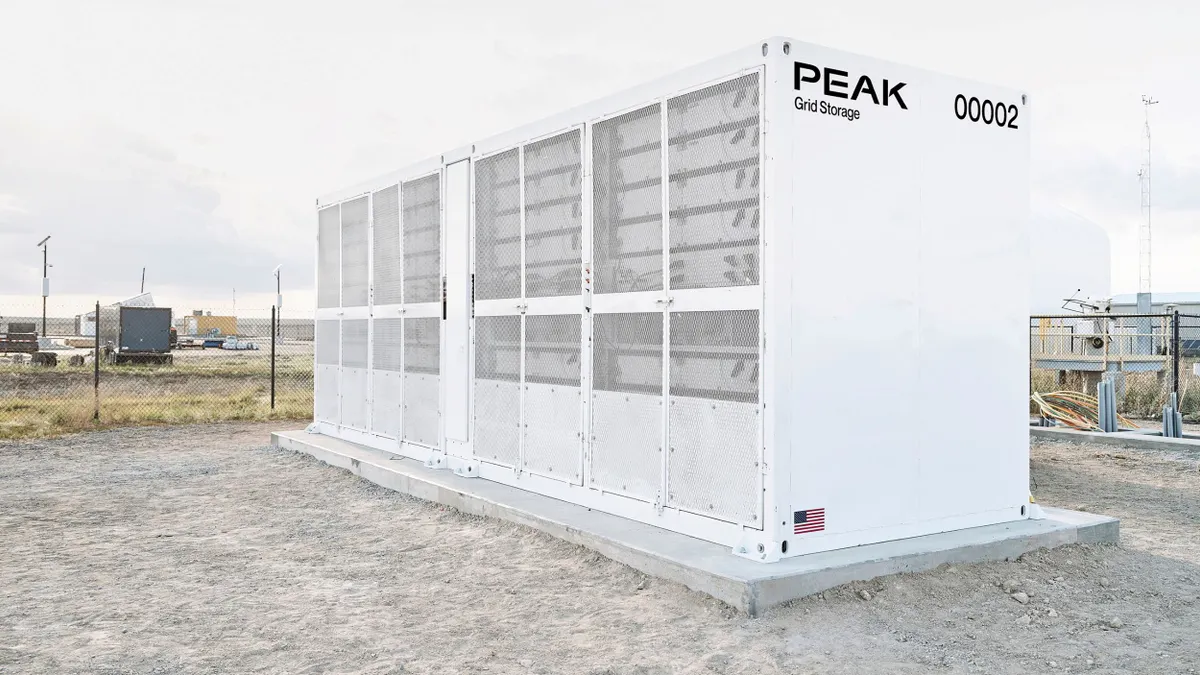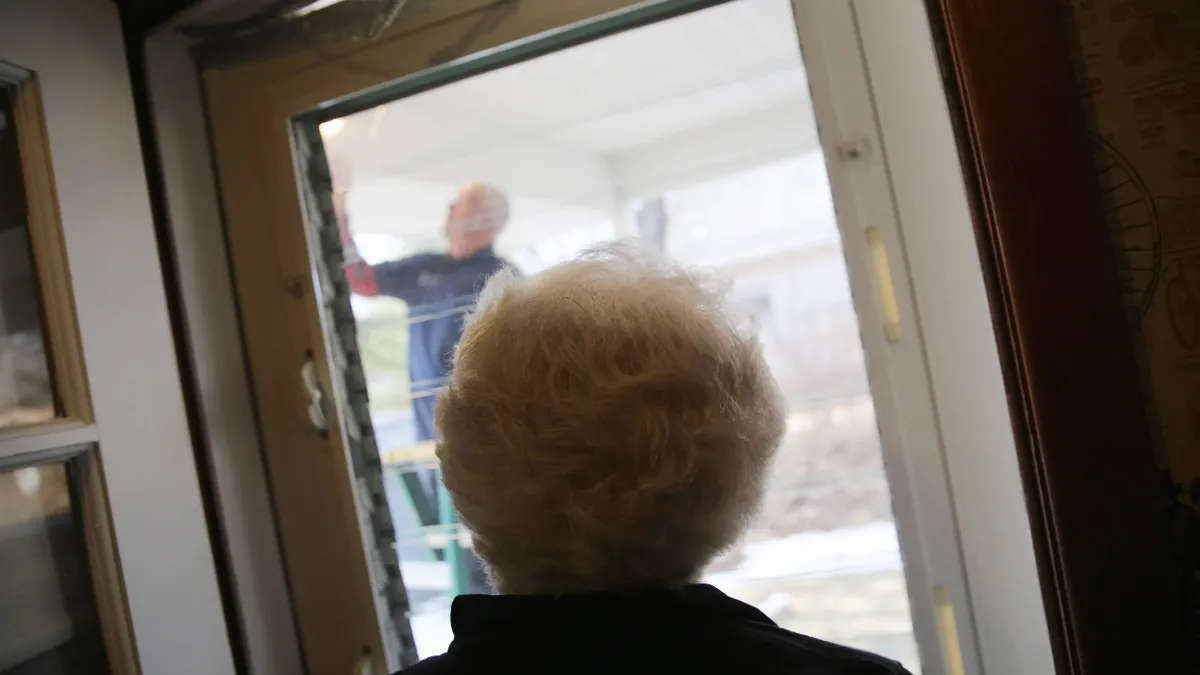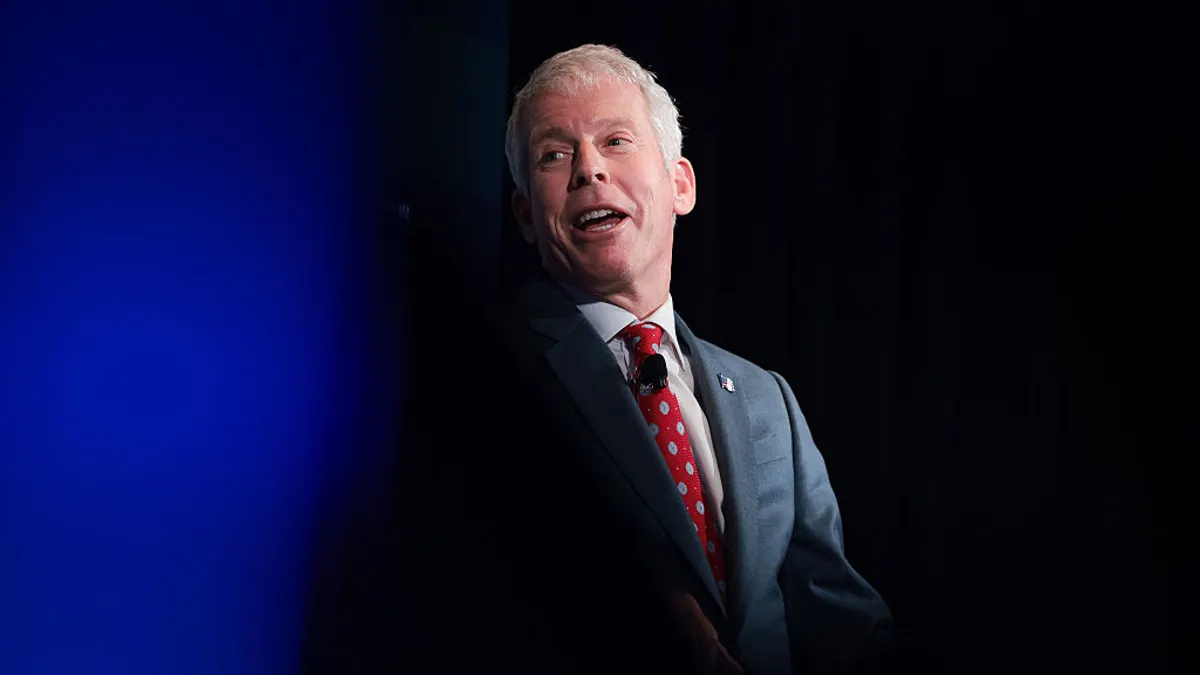As the Trump administration looks to boost fossil fuels and baseload generators, California policymakers are having the opposite conversation — steadily moving their utilities to a cleaner, more flexible power system.
Last month, Gov. Jerry Brown (D) signed Senate Bill 338, which requires utilities to consider how carbon-free resources can meet peak power needs in their integrated resource plans (IRP).
Today, natural gas units typically serve the sharp afternoon ramp up in electricity demand that occurs when California’s plentiful solar generation begins to wane — a phenomenon labeled the “Duck Curve” for the shape of its load chart.
SB 338 aims to change that by directing utilities to plan for energy storage, demand-side management and other non-emitting resources to meet those peak demand needs.
“Given the state’s clean energy and climate goals, we wanted the regulatory agencies to know the legislature wants planning for the duck curve’s ramp and peak at a lower cost than by building new fossil fuel generation,” said State Sen. Nancy Skinner (D), SB 338’s author.
Legislative negotiations eliminated earlier provisions in the bill that would have mandated utilities source an increasing amount of zero-carbon resources to meet peak demand over time. Even so, environmentalists applauded the new law’s intent.
“It’s a good first step,” said Laura Wisland, senior energy advisor at the Union of Concerned Scientists. It “lays the groundwork” for preventing fossil fuel resources from “pushing renewables out of the mix to meet the grid’s ramping and peak demand needs.”
A wide variety of entities, including the CPUC and the state’s investor-owned utilities, had a hand in crafting the final bill language. In the end, even gas generators welcomed the new law, saying it will allow their generators to be preserved on the system for years to come.
Distributed energy resources (DERs) and other zero-carbon technologies cannot meet the state’s ramping and peak needs “which at times exceeds 13,000 MWs over a three-hour period,” said Jan Smutny-Jones, CEO of generator trade group Independent Energy Producers Association (IEPA).
“Magical thinking will not keep the lights on,” Smutny-Jones said. “DERs will continue to grow but the gas fleet will be with us for the foreseeable future.”
Just how long that future will be for gas generators in California will now fall to the CPUC, which evaluates utility IRP filings. Stakeholders say the new planning directives could give extra impetus to efforts to clean up the state’s ramping generation fleet, helping it meet ambitious climate goals and providing a model for other states.
SB 338's evolution
Members of the energy committees in the California Assembly and Senate shaped the bulk of SB 338, said Andrew Zingale, policy director for California Assembly Speaker Pro Tem Kevin Mullin (D), a co-sponsor of the bill.
Each of the California IOUs also played an important role, Zingale said, and another shaping factor was the consistent signal from the CPUC that “it did not want new goals or mandates to implement.”
Each California load-serving entity (LSE) must file and regularly update an IRP with the CPUC. The commission reviews the plans to ensure LSEs will meet their requirements under California’s 50% renewables mandate and its mandated 40% reduction in greenhouse gas emissions from 1990 levels by 2030.
SB 338 requires the commission to consider clean resources to meet peak demand in its IRP reviews. Customer rates, system reliability and resilience, and local air quality must remain protected.
The bill requires IRP planning scenarios for procurement of DER, energy efficiency technologies, demand response products, and energy storage. Planning must also meet California’s resource adequacy requirements.
The initial version of SB 338 proposed a Clean Peak Standard (CPS) mandating that a percentage of peak demand be met with “clean peak resources.” But the CPS was eliminated in the final law.
Sen. Skinner accepted changes because she had found, as author of California’s storage mandate, that “empowering regulatory agencies” can be smart politics, she said. “Given a policy orientation, regulators may be willing to do more than lawmakers.”
The final storage bill expressed only “strong legislative support for energy storage,” Skinner said. The commission established a 1,325 MW storage mandate, which was “more energy storage than my original bill required.”
Zingale said SB 338 similarly demonstrates legislative intent about peak demand. “It uses the IRP process and is very different than the original proposal, but it puts the issue on the agenda,” he said.
Stakeholders react positively
Southern California Edison (SCE), one of three dominant California IOUs that will be affected by SB 338, initially opposed Sen. Skinner’s proposal early in its evolution, spokesperson Robert Laffoon Villegas emailed.
SCE’s concern was potential conflicts “between the legislation and other policy initiatives, goals, and targets set by and being implemented at the CPUC,” Laffoon Villegas added.
There is “misalignment of demand with renewable energy generation” that results in “inefficient use of the electric system,” an early letter from SCE to Skinner read. But “clean peak standard” — a binding mandate for zero-carbon resources — “is not the solution.”
The existing IRP process already requires state regulators to approve “procurement of resources to provide grid reliability services that minimize reliance on system power and fossil fuel resources,” SCE argued. While SB 338’s “prescriptive” mandate would “impose a significant operational requirement” on the grid “based on an untested model for procuring reliability and capacity products.”
That, SCE officials wrote, would increase costs and threaten reliability if the necessary clean peak resources “are not available in a timely manner.”
But SCE’s opposition evaporated when Skinner revised the bill to include a planning directive, rather than an explicit clean peak standard.
Revisions by Sen. Skinner ensure that the legislation “works with the current IRP,” according to Laffoon Villegas. They also provide implementation discretion to the CPUC and California Energy Commission (CEC) and make clear that the law applies to all LSEs.
“As a result, SCE removed its opposition to the bill,” he said.
San Diego Gas and Electric (SDG&E), another of the three dominant IOUs, has no concerns about compliance or implementation, Communications Manager Helen Gao emailed.
The utility agrees with SB 338’s “broad goals” and approves of the fact that renewables and peak demand are not addressed “in isolation,” Gao added.
Pacific Gas and Electric (PG&E), California’s third IOU, “looks forward to being involved in the public stakeholder implementation process,” spokesperson Ari Vanrenen emailed. The utility was too immersed in Northern California’s struggle with wildfires to respond further.
The Solar Energy Industries Association (SEIA) is “pleased” that SB 338 became law, California Affairs Director Brandon Smithwood emailed. It will allow solar to build on the 13% of California electricity it provided in 2016 and “tackle emissions in the most challenging hours of operating the grid.”
Will Mitchell, Director of Government Affairs for utility-scale solar developer Recurrent Energy, said SB 338 is “a major milestone in the evolution of the reliable management of the electricity grid.”
The bill gives the state’s LSE’s “a head start” toward a higher renewables future.
“Power system planning, grid services, and resource procurement must evolve,” Mitchell emailed. “SB 338 will serve as a catalyst for that.”
The commission must now work the law’s intent into the IRP process, he added. Successful implementation will depend on the CPUC obtaining “the most up-to-date cost information.”
To date, IRP processes have shown energy storage to be cost-constrained, Mitchell said. Recurrent’s price forecasts “lead us to believe storage can be a much larger part of the solution.”
If the future envisioned by SEIA and Recurrent is realized, it could present challenges to California’s natural gas generators.
IEPA’s Smutny-Jones said that is why California must move “in a rational way” toward its goals. The abrupt elimination of natural gas capacity “would be very bad for reliability and affordability,” he said.
He approved of moving the debate about how to meet peak demand to an IRP proceeding.
“We had real concerns about the prescriptive requirements in the original bill,” Smutny-Jones said. “They could have resulted in difficulties meeting reliability needs.”
California’s system must be “reliable, affordable, and clean, in that order” and “most of the modern gas fleet meets those criteria,” Smutny-Jones emailed. That has allowed natural gas to play an important role in resource adequacy (RA) and in putting the state on track to meet its electricity sector emissions reductions targets, he added.
Natural gas has long played an especially important role in RA. Contracts with providers of natural gas generation guarantee flexible generation will be available to ramp up and meet peak demand when needed. Under RA contracts, generators are paid for being available, whether called on or not.
But new numbers show the IEPA’s “modern gas fleet” is not used as much by the electric sector for RA as policymakers believe.
Greening the ramp
In the spring months, more than 90% of California’s resource adequacy is contracted to natural gas generators, notes a recent filing from the Center for Energy Efficiency and Renewable Technologies (CEERT) at the California Independent System Operator (CAISO).
But in March 2017, the resources that actually met demand looked much different. According to CEERT, about 40% of the afternoon ramp in March was met by imported hydropower from the Pacific Northwest, while about 45% (4,200 MW) was met by California natural gas plants.
UCS’s Wisland said SB 338 “forces us to ask in the IRP process whether the state will continue to rely on fossil fuels to meet that evening ramp.”
But policymakers also need to ask that question in the RA proceeding, she said. “The IRP looks out 10 years but the RA projects the coming year’s grid needs and decides which generators get contracts to meet those needs.”
CEERT Grid Policy Director Liz Anthony agreed.
“The key is resource adequacy,” she said. “The SB 338 [clean peak standard] idea is helpful when the concern is the peak. Greening the ramp is the next step.”
With increasing solar penetration, operational and planning challenges are more around flexibility to meet short duration variability needs and long duration ramping needs, she said. “The call for greening the ramp is because flexibility today is built around gas-fired generation, not low carbon resources.”
The “greening the ramp” idea was developed in response to the data showing much of California’s flexibility comes from hydropower, Anthony said. “A significant amount of the natural gas generation contracted for flexible capacity idles all day and only a small part is used to meet the ramp.”
To green the ramp, CEERT and its allies propose an addition to California’s RA provision.
The RA policy initially provided out-of-market payments to generators for both system-wide and localized RA, Anthony said. In 2014, the state added flexible RA “to address variability, uncertainty, and the ramp.”
Natural gas generation has traditionally qualified for contracts to provide all three types of flexibility, Anthony said. Even natural gas plants with long startup times that need to run all day to be available to meet the ramp have qualified for the out-of-market payments.
Imported hydropower, for various policy and technical reasons, does not qualify for flexible RA contracts. SB 338 is the first effort to include other clean energies. New policy could open the market to both.
“Greening the ramp will allow clean resources that can meet the predictable ramp, but not variability and uncertainty, to do so," Anthony said. "It will also allow resources that can meet the variability and uncertainty needs, but not the evening ramp, to do so. This fundamentally requires defining and addressing ramping needs separately.”
The CPUC opened a proceeding in September “to oversee the resource adequacy program, make any changes and refinements to the program, and establish local and flexible procurement obligations.”
The ongoing CAISO proceeding, FRAC MOO 2, is addressing “the flexibility challenges the system operator is dealing with and working on redefining what flexible capacity requirements should be,” Anthony said. “It will feed into CPUC RA work when complete.”
IEPA’s Smutny-Jones warned that if out-of-market RA compensation to natural gas plant operators is too abruptly terminated, they could abandon the system.
“Owners of plants that do not make money will eventually do the economically rational thing, which is to shut them down,” he said.
An alternative is longer-term, competitively-procured RA contracts, Smutny-Jones said. Contractual certainty would allow generators to invest in $10 million-plus retrofits needed to efficiently meet flexible needs.
UCS’s Wisland said the original version of SB 338 asked “one of the core issues in future electricity system management.” The final law, however, “only scratches the surface of how to replace natural gas for meeting essential grid services.”
Sen. Skinner did not answer questions about RA but Zingale said both she and Rep. Mullin “have heard that RA should be part of our focus.”
“Over the next few months, something is likely to happen,” he said.




















